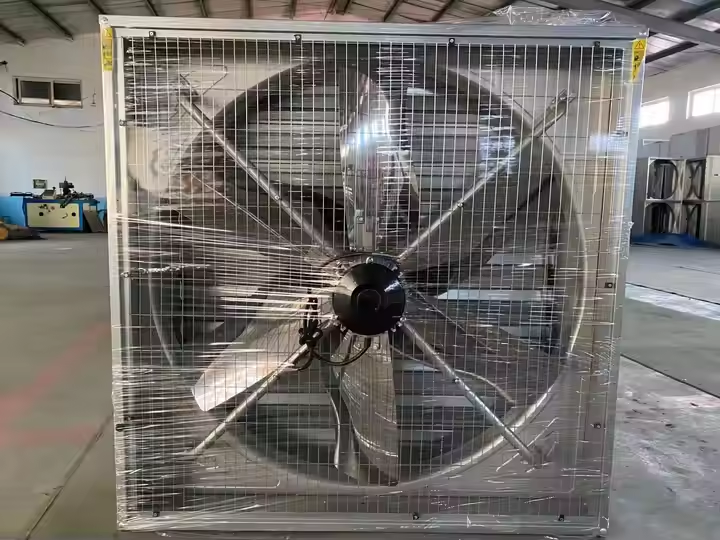Understanding CFM: The Power Behind Kitchen Ventilation Fans
How CFM Ratings Impact Airflow Efficiency
CFM stands for Cubic Feet per Minute, basically telling us how much air a fan can push around. When shopping for kitchen fans, this number matters a lot. Fans with bigger CFM ratings tend to move more air, something we really need to get rid of all that smoke, heat, and bad smells from cooking. Better airflow means cleaner air inside our kitchens, especially important if someone cooks there multiple times a day. Studies show what most people already know intuitively the right CFM depends on how big the kitchen space is and how often it gets used. Most professionals suggest going for at least 100 CFM per linear foot of cooktop surface area to make sure everything stays properly ventilated.
Matching CFM to Your Cooking Habits
Getting the right CFM rating depends largely on how people actually cook in their kitchens. The amount of smoke and heat produced varies quite a bit between different cooking techniques, so this directly affects what kind of CFM capacity someone might need. Take frying and grilling for instance these typically require much stronger ventilation systems, sometimes needing over 600 CFM just to handle all that airborne grease and heat. Steaming or boiling doesn't create nearly as much mess in the air, so those situations call for lower CFM numbers. Before picking out any particular model, most experienced cooks will look at both the size of their kitchen space and how often they're using it day to day. When matched properly, good ventilation keeps smoke from hanging around and eliminates lingering food smells, making the whole cooking experience much better for everyone involved.
Types of Heavy-Duty Kitchen Ventilation Fans
Roof Vent Fans for Optimal Smoke Extraction
Roof vent fans play a really important role when it comes to getting rid of smoke and excess heat in both commercial and home kitchens. When installed properly on rooftops, they take advantage of how hot air naturally rises upwards, basically letting gravity do most of the work in pushing that air out of the kitchen space. We've seen this setup work wonders particularly well in busy restaurants and large catering operations where there's constant cooking going on all day long. According to what many in the industry have observed, good quality roof vents help move air around much better while putting less pressure on those expensive ductwork systems inside. Plus, restaurant owners report saving quite a bit on their electricity bills over time because these fans aren't as power hungry as other ventilation options. So for anyone running a kitchen operation, investing in a solid roof vent system makes sense if they want clean air circulating without breaking the bank on monthly utility costs.
High-Capacity Ventilation Exhaust Systems
High capacity ventilation systems are built for serious cooking situations where regular vents just won't cut it. These powerful units suck up all sorts of stuff floating around kitchens - grease particles, smoke, even those pesky odor molecules we hate so much. The result? Cleaner air throughout the whole space. Installation isn't one size fits all either. Most systems work fine going straight up through the ceiling or across the wall depending on what fits best in different kitchen setups. Pretty much every commercial kitchen out there can find room for one of these big boys without sacrificing precious workspace. According to industry studies, when restaurants install proper ventilation, they see major drops in harmful airborne particles. Staff breathe easier and customers generally feel better too after spending time in a kitchen that doesn't smell like last night's deep fried everything.
Industrial-Grade Extractor Fans for Commercial Kitchens
Extractor fans built for industrial use play a vital role in commercial kitchens, especially those dealing with constant cooking demands throughout the day. These units come with heavy duty motors and advanced filters that can handle non-stop operation without breaking down. The ability to run all day long makes them absolutely necessary for keeping the air clean in places where frying, grilling, and baking happen constantly. Restaurants that install these systems typically see a noticeable drop in greasy residue buildup on surfaces and equipment. When the air stays fresh and free from smoke particles, workers find it easier to breathe and stay focused on their tasks. Good ventilation isn't just about comfort either it directly impacts food safety standards too. Kitchens with proper extraction maintain better hygiene levels, which translates into happier staff and customers who trust the cleanliness of their meals.
Health and Air Quality Benefits of Proper Ventilation
Reducing Harmful Pollutants and Carcinogens
Good ventilation makes all the difference when it comes to cutting down on bad stuff floating around kitchens. Those exhaust fans above stoves really do work wonders against things we breathe in while cooking, like those VOCs and other chemicals from burning food or gas appliances. Some recent research points out that when people actually use their ventilation properly, they can cut down on dangerous particles by almost half sometimes. Cleaner air means healthier lungs and hearts for everyone who spends time in commercial kitchens, whether they're chefs or customers. Pretty much every major health group out there, including WHO, keeps stressing how important proper airflow is if we want to avoid serious problems later on down the road.
Eliminating Lingering Odors and Grease Buildup
Good kitchen ventilation makes all the difference when it comes to getting rid of those stubborn cooking smells that stick around long after dinner is done. These systems do more than just freshen up the place they actually pull out grease particles from the air, which stops dangerous buildups that could lead to kitchen fires down the line. Most professionals suggest looking for fans rated at least 100 CFM for average sized kitchens, though bigger spaces need even more power. The right system keeps things smelling great and makes working in the kitchen much more pleasant for everyone involved. Spending money on quality ventilation isn't just about keeping things clean it's also about protecting people who cook there day in and day out from potential hazards we often overlook.
Installation Considerations and Noise Management
Ducted vs. Ductless Ventilation Configurations
Picking out a kitchen ventilation system really comes down to knowing what separates ducted from ductless models. The ducted ones work great because they actually push the air out of the house, which means less lingering smell in the kitchen. But there's a catch they need proper installation by someone who knows what they're doing and plenty of room for all those ducts running through walls and ceilings. That's why most people go with ducted systems when they cook meals that involve lots of frying or baking regularly. Ductless units on the other hand give homeowners more freedom since they just filter the air instead of sending it outside. These tend to be easier to set up and fit into smaller spaces or older homes where running new ducts would be impossible. However, anyone who cooks spicy dishes or deals with strong odors might find themselves disappointed with how well ductless systems handle serious smoke buildup over time. Before making a choice, take a good look at how much space is available behind cabinets, check local regulations regarding exhaust requirements, and think about what kind of meals typically come out of the kitchen week after week.
Balancing Power with Quiet Operation
When picking out a kitchen ventilation system, finding the right mix between strong airflow and keeping things quiet matters a lot. Nobody wants to cook while fighting against loud fan noise that makes conversation impossible. Getting this balance right means having enough power to clear smoke and smells without turning the kitchen into a noisy workplace. Many newer models come equipped with adjustable speeds so users can dial back the noise when needed, plus they incorporate special materials that absorb sound rather than letting it echo around. Most experts agree that keeping noise below 60 decibels works best for most kitchens, which is roughly equivalent to normal conversation volume. Going this route doesn't just make cooking sessions more enjoyable it actually improves how well the whole system functions over time while still allowing people to chat comfortably during meal prep or dinner gatherings.
Maintaining Your Kitchen Ventilation System
Cleaning Filters for Peak Performance
Keeping those ventilation filters clean matters a lot if we want our kitchen fans working properly. Most professionals recommend giving those grease traps a good scrub about once a month, and swapping them out completely around every half year mark. When filters get clogged up, they just don't work as well anymore. That means higher electricity bills and worse airflow throughout the kitchen. What's even scarier? Clogged filters actually pose serious fire risks over time. Setting up a regular cleaning routine makes all the difference in how well the whole system functions while keeping everyone safe from potential dangers. Skipping these simple maintenance steps will eventually turn a decent ventilation system into something barely functional, so it pays off to make filter cleaning part of our standard kitchen upkeep schedule.
When to Upgrade Your Ventilation Setup
Knowing when to replace or upgrade the ventilation system in a kitchen is really important for keeping things safe and running smoothly. If there are lingering smells after cooking, poor airflow throughout the space, or noticeable grease accumulation on surfaces, these are pretty good signs that something needs changing. A new system typically means better air circulation, lower energy bills, and fewer fire hazards from built-up oils. Most professionals recommend checking out how well the current setup works around every five years give or take. During these checks, look at whether newer models might offer features like quieter operation or smarter controls that weren't available before installation. Taking care of ventilation isn't just about comfort either; kitchens need to meet certain code requirements for proper exhaust capacity, so regular maintenance helps avoid problems down the road.

